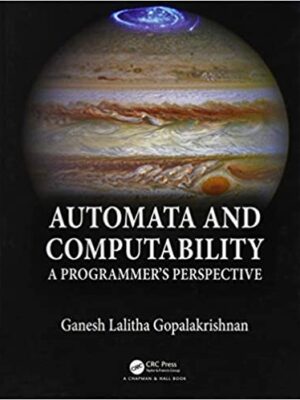Matchmoving: The Invisible art of Camera Tracking (Printed Price)
Original price was: ₹3,856.14.₹3,084.91Current price is: ₹3,084.91.
ISBN: 9781118352052
Author/Editor: Tim Dobbert
Publisher: John Wiley
Year: 2013
1 in stock (can be backordered)
Description
Get your foot in the studio door by learning the art of matchmoving Matchmoving is a technique that allows computer graphics to be inserted into live-action footage with correct position, scale, orientation, and motion. Also known as motion tracking, it’s what allows movie monsters to run down Main Street and robots to run through crowds–and look real. Now this unique book from a top expert from Industrial Light and Magic teaches you the art of matchmoving. With step-by-step tutorials and pages of examples, this book first explains the basics and then shows you professional techniques, from 3D calibration and tracking, to stereoscopy, and more. * Explains concepts and teaches professional techniques for successful matchmoving * Authored by a top matchmove specialist from Industrial Light and Magic, who walks you through step-by-step tutorials and impressive examples * Covers matchmoving basics, 2D tracking, 3D calibration and tracking, automatic tracking, cameras, integrating matchmoves, and stereoscopy Learn how studio visual effects professionals make all the right matchmoves with Matchmoving: The Invisible Art of Camera Tracking 2nd Edition.
Additional information
| Weight | 0.68 kg |
|---|
Product Properties
| Year of Publication | 2013 |
|---|---|
| Table of Contents | Introduction xxi Chapter 1 The Basics of Matchmoving 1 Exploring a Typical Matchmove 2 Moving from 3D to 2D and Back Again 4 Understanding the Matchmoving Process 5 Evaluating the Footage 5 Applying Information 6 Defining the Camera 6 Fitting the Set 7 Testing the Matchmove 9 Delivering the Scene 9 Matchmoving in the Production Pipeline 9 Perspective Matching Tutorial 10 Gathering the Data 11 Setting Up the Camera 13 Adding Rough Geometry and Refining the Camera 15 Creating a Camera Rig 16 Evaluating and Adjusting the Camera 18 Chapter 2 Matchmoving Software 23 Using Matchmoving Programs 24 Introducing Photogrammetry 24 Calibration 25 The Optics of Photography 26 Projection 28 Building a Better Camera 31 Parallax: A Matchmover s Best Friend 38 Understanding How Matchmoving Programs Work 40 Requirements for Matchmoving Programs 41 Chapter 3 2D Tracking 43 Understanding the 2D Tracking Process 44 Exploring the Anatomy of a 2D Track 45 Track Placement: Making Every Track Count 47 Sample the 3D Space 47 Maintain the Minimum Number of Tracks 48 Track Stationary Objects 49 Track True 3D Positions 50 Getting Tracks to Stick 51 Following Hints for Effective 2D Tracking 52 Handling Plate Issues 54 Motion Blur 55 Soft Focus or Rack Focus 56 Occlusion 56 Noise 58 Low-Contrast Features 58 Lack of Trackable Features 59 Optimizing the Plate for 2D Tracking 61 2D Tracking Tutorial 62 Evaluating the Shot 63 Placing the First Tracks in SynthEyes 63 Choosing Your Tracks 66 Adding the Remaining Tracks 66 Chapter 4 3D Calibration 69 Understanding Good Calibration 70 Evaluating Error 70 Calibrating Your Cameras 72 Finding the Right Fit 72 Calibration Tutorial 73 Evaluating the Solution 77 Evaluating the 3D Nulls 77 Evaluating the 3D Space 78 Rendering the Matchmove 79 When Good Solutions Go Bad 80 Determining Camera Moves 81 Dolly/Crane/Moving Camera 81 Pan/Tilt Shots 82 Slight Dollies/Translation 82 Lock-offs 83 Zoom Shots 83 Shaky Footage/Handheld Footage 84 Setting Up a Coordinate System 84 Coordinate System Tutorial 85 Exporting the Scene 88 Chapter 5 Automatic Tracking 91 Tracking on Autopilot 92 Editing Automatic Tracks 93 Using Masks 96 Reaping the Benefits of Automatic Tracking 97 Noise Reduction 97 Environment Definition 98 Implementing the Automatic Tracking Process 99 Automatic Tracking Tutorial 99 Chapter 6 Cameras 107 How Film Cameras Work 108 Lenses 110 Focal Length 111 Focus 113 Nodality 113 Film Backs 115 Film Back and Focal Length 115 Digital Cameras 117 CMOS, CCD, and Rolling Shutter 119 Camera Information 121 Format 122 Lens Distortion 123 Anamorphic Distortion 127 Capture and Digitization 128 Video 128 Film 129 HD 130 Keeping It All Straight 130 Chapter 7 Set Fitting 133 Fitting the Camera 134 Checking the Matchmove 135 Proxy Geometry 135 Checkerboards 137 Fitting the Set 138 Moving the Camera 138 Scaling the Camera 139 Creating Camera Rigs 141 Set-Fitting Tutorial 141 Examining the Exported Scene 142 Adding Test Geometry 143 Moving the Camera 144 Texturing the Objects 149 Performing the First Tests 150 Placing the Matchmove in the Set 152 Altering the Coordinate System 156 Delivering the Scene 156 Tutorial Continued 157 Chapter 8 Being on Set 159 Getting the Right Information 160 Getting Camera Information 162 Before the Shoot 162 During the Shoot 162 After the Shoot 165 Marking Up the Set 165 Tracking Markers for a Green Screen or Blue Screen 166 Tracking Markers for Set Pieces 167 Tracking Markers for Exterior Scenes 168 Working with Others on Set 168 Building a Matchmoving Kit 172 Shooting Distortion Grids 173 Chapter 9 Matchamation 175 Understanding the Basic Technique 176 Establishing the Distance to the Camera 176 Setting the Initial Pose 177 Using Nonlinear Animation Techniques 178 Analyzing the Movement 178 Making the First Pass 179 Making Additional Passes/Tweaks 180 Making Model Changes 181 Working with Imperfect Data 181 Matchamation Tutorial 182 Setting Up the Camera 182 Creating the Proxy Object 184 Creating a Matchamation Rig 185 Analyzing the Motion 186 Making the First Pass 188 Making the Second Pass 191 Making Additional Passes 194 Chapter 10 Troubleshooting and Advanced Techniques 197 Performing Effective Troubleshooting 198 Following a Troubleshooting Checklist 199 Check the Camera s Motion 199 Check Set Placement and Fitting 201 Scrutinize 2D Tracking Closely 202 Check for Plate Issues 202 Diagnosing the Problem 203 No nulls are visible after calibration 204 Nulls are all in a line or a single point 204 The camera path jumps suddenly to another position or is extremely jagged and chaotic 204 Everything lines up on the fi rst frame but quickly slips off 205 Noise or jitter appears in the camera s motion path 205 Objects appear to tear away from the plate feature during areas of heavy motion blur 206 Using Advanced Tools and Tricks 206 Using Advanced 2D Tracking Tools 206 Using Constraints 207 Working with Reference Photos 209 Forcing a Calibration 210 Faking the Focal Length 210 Using Survey Data 211 Chapter 11 Object Tracking 215 The Object-Tracking Process 216 Understanding Object Tracking vs Matchamation 216 Following the Object-Tracking Workfl ow 216 Converting a Camera Track to an Object Track 217 Object-Tracking Tutorial 219 Common Problems with Object Tracking 229 2D Tracking Problems 229 Difficult Object Motion 230 Object Not Truly Rigid 231 Tracking Human Faces 232 Geometry Tracking 233 Geometry-Tracking Tutorial 234 Common Problems with Geometry Tracking 237 Advanced Object Tracking 237 Moving Camera/Moving Object 238 Tracking Deforming Objects 239 Chapter 12 Multipurposing Matchmoving Data 241 Creating Special Cameras 242 Extending or Enhancing Matchmoves 242 Blending Matchmoves 243 Blending Cameras in Maya 245 Object Track as a Camera Track 251 Matchmoves for Paint Work: Patchmoves 252 Matchmoves for Compositors 253 Matchmoves for TD Work 254 Not the End of the Road 256 Chapter 13 Stereo 257 Understanding Stereoscopy 258 Interocular Distance 259 Convergence 261 How IO and Convergence Affect Stereo Depth 264 Adjusting Stereo Parameters in Postproduction 265 Stereo Postconversion 266 Filming Stereo Footage 266 Side-By-Side Rigs 266 Beam-Splitter Rigs 267 Dual-Lens Cameras 269 Viewing Stereo Footage 269 Anaglyphs 270 Polarized Lens Systems 271 Modern Stereo Projection 271 Active Shutter Systems 272 Matchmoving Stereo Footage 272 2D Tracking 273 Solving 273 Set Fitting 275 Evaluating the Matchmove 275 Overcoming Common Problems 276 Problems with 2D Tracking 276 Problems with 3D Tracking 277 Focal-Length Issues 277 Appendix A Resources 279 Appendix B Matchmoving Software and Useful Links 281 Matchmoving Software 282 Other Useful Programs 283 Books 283 Websites 284 Appendix C Film Formats 285 16 mm Formats 286 35 mm Formats 286 Large Formats 287 Digital Formats 287 Calculating the Film Back for Cropped Images 288 Glossary 289 Index 299 |
| Author | Tim Dobbert |
| ISBN/ISSN | 9781118352052 |
| Binding | Paperback |
| Edition | 2 |
| Publisher | John Wiley |
You must be logged in to post a review.





Reviews
There are no reviews yet.